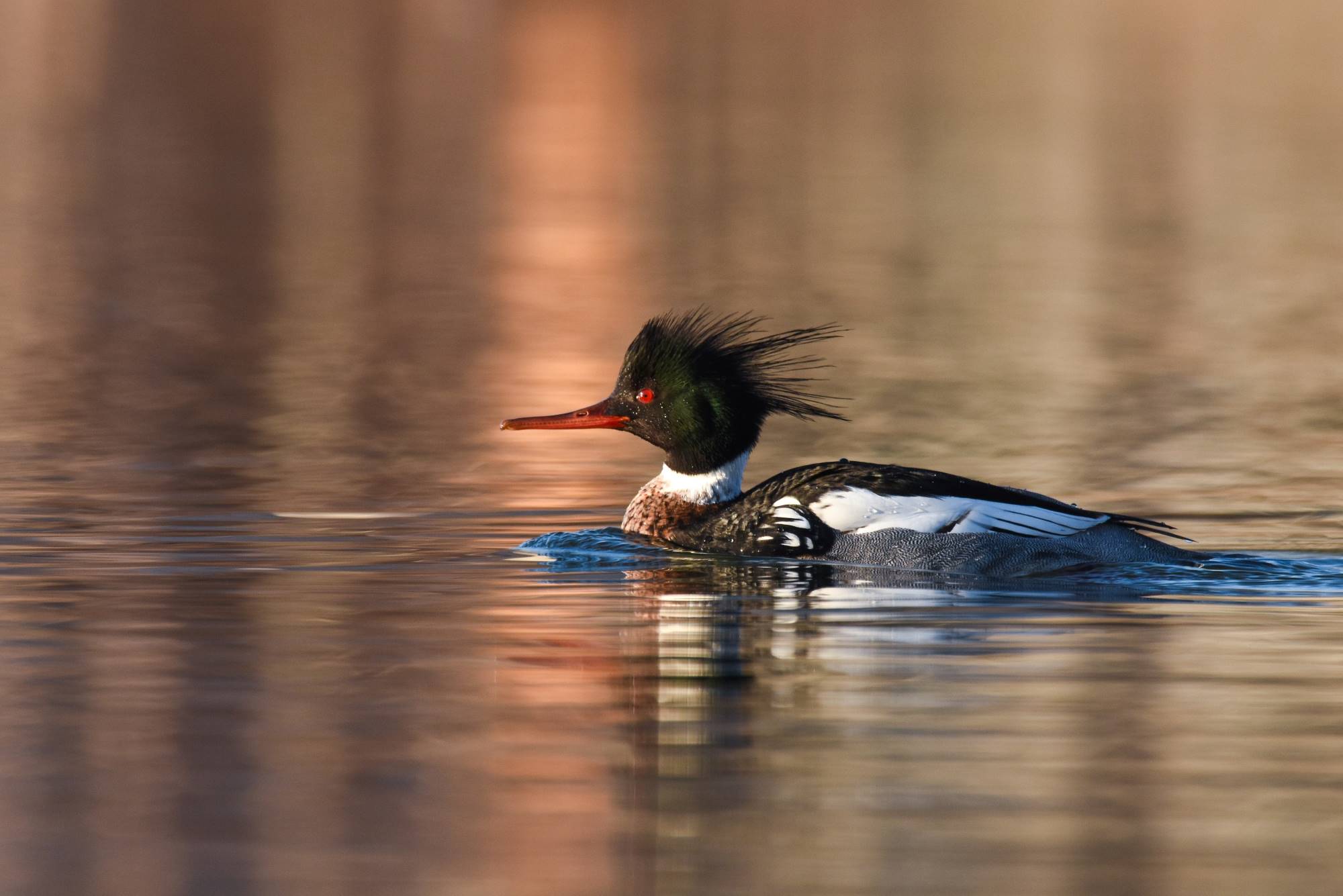
Red-Breasted Mergansers
Red-breasted Mergansers, a species of sea duck, are a captivating presence in Utah, particularly within the state's larger bodies of water. Known scientifically as Mergus serrator, these ducks are distinguished by their slender, serrated bills and shaggy crests. Males are particularly striking with their dark green heads, white neck ring, and reddish-brown breast, while females and juveniles display grayish bodies with reddish-brown heads and crests. In Utah, Red-breasted Mergansers are typically observed during their migration periods and in the winter, frequenting larger lakes, reservoirs, and occasionally the Great Salt Lake. These birds prefer open water habitats where they can dive and forage for fish, their primary diet, making Utah's larger, deeper water bodies ideal for their feeding habits.
The feeding behavior of Red-breasted Mergansers is a remarkable aspect of their ecology. They are expert divers, capable of submerging to considerable depths to chase and catch fish. Their serrated bills are perfectly adapted for grasping slippery prey, making them one of the few duck species that primarily feed on fish. In Utah, their diet consists of a variety of small fish species found in the state's lakes and reservoirs. These feeding habits play a crucial role in the aquatic food chain, as Red-breasted Mergansers help to maintain healthy fish populations.
While breeding does not typically occur in Utah, Red-breasted Mergansers have fascinating breeding behaviors. They breed in the northern regions of North America and Eurasia, typically near coastal areas or large, freshwater lakes. Nests are built on the ground, often concealed in vegetation near water. The female lays a clutch of 6-12 eggs, which she incubates alone. Post-hatching, the ducklings are precocial and quickly take to the water, where the mother guides them and teaches them to forage.
Conservation of suitable aquatic habitats is vital for the continued presence of Red-breasted Mergansers in Utah. Their reliance on large, open water bodies for feeding makes them sensitive to changes in water quality and availability. Threats such as pollution, water diversion, and habitat destruction can impact their food sources and, by extension, their survival during migration and wintering periods. Conservation efforts that focus on maintaining and restoring the health of Utah's lakes and reservoirs are therefore essential not only for Red-breasted Mergansers but also for the overall health of the aquatic ecosystems.
For birdwatchers and nature enthusiasts in Utah, the migration and wintering periods of Red-breasted Mergansers offer exciting opportunities for observation. These birds, with their distinctive appearance and dynamic feeding habits, are a delight to observe. Whether seen diving for fish in a clear lake or resting on the water's surface, Red-breasted Mergansers add to the diversity and beauty of Utah's birdlife. Their presence in the state's waterways during certain times of the year is a reminder of the interconnectedness of ecosystems and the importance of conservation efforts to protect migratory and wintering habitats for these and other bird species.